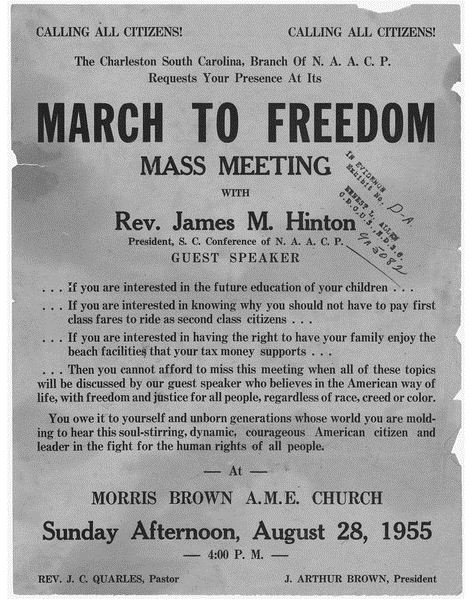The Civil Rights Movement in the 1950's: The Murder of Emmett Till, Montgomery Bus Boycott & More - High School History
Progress on African-American civil rights had been painfully slow in twentieth century before World War II. However the ripple effects of the conflict, both domestically and overseas, combined with the determination of African-Americans to move forward, created a new urgency for change.
Brown vs. Board of Education gave civil right activists courage and legal standing in some cases. Events like the lynching of Emmet Till and the Montgomery Bus Boycott moved the proverbial skeleton out of the closet and into America’s living rooms. The emergence of new national civil rights organizations like the SCLC and SNCC and prominent leaders like Dr. Martin Luther King Jr., pushed the movement into a new phase that hinted at the increased urgency of protest in the next decade.
Objectives - Students should be able to describe events and progress in the civil rights movement in the 1950’s.
Materials
- Classroom computer with projector.
Lesson Procedure
1. Before class, watch the American Experience documentary on the murder of Emmett Till. It can be found here:
https://www.youtube.com/watch?v=r9E7aWLq30Y
Decide how much of it you want to show your class, keeping in mind the disturbing nature of some of the footage (they show what Till looked like after his body was recovered). Use the video to set the stage for class. Talk about the entrenchment of segregation in the south, the use of violence to enforce Jim Crow laws, and the fact that segregation was legal until the Brown decision in 1954. The true significance of the Till lynching was that it helped motivate African-Americans like never before to work for equality.
2. Review the concept of delegated powers and federalism. Explain that government power is divided up between different levels (federal, state, and local), and that the federal government did not have the standing in many cases in the 1950’s to interfere in what were legally either state or local issues.
3. Show students the Herblock cartoon from the Montgomery Bus Boycott, which can be found here:
https://www.loc.gov/rr/print/swann/herblock/images/s03530u.jpg
Talk about the economic power of the boycott, the MIA’s efficient use of the national media, the Supreme Court case, and the emergence of Dr. Martin Luther King Jr..
4. Finish class with this short clip about Representative John Lewis:
https://www.youtube.com/watch?v=MFUI-at4sEg
Explain that Lewis was in Washington DC (in 1963) as a leader in SNCC (Student Non-violent Coordinating Committee). Other large civil rights groups at the time included the NAACP, the SCLC, and the National Urban League. These groups raised funds and organized the efforts that would define the end of the 1950’s and the beginning of the 1960’s. Without them, large-scale protest would have been impossible.
Resources
Students can view a **timeline of the Civil Rights Movement here.<br> **
Assessment for the Unit
Potential Assessments for Unit on the 1950’s
1. Write a five paragraph essay comparing and contrasting forces that worked for the status quo with forces that worked for change in this unit.
2. Have students present short biographies on some of the following figures in small groups: Joseph McCarthy, Dwight Eisenhower, Elvis Presley, Wehner von Braun, Harry Truman, Orval Faubus, Martin Luther King Jr., Jack Kerouac.
3. Lead a Socratic Seminar on the following questions:
- The Cold War in the 1950’s was good for America
- Most criticisms of consumer culture in the decade were accurate
References
- Announcement of a meeting sponsored by the National Association for the Advancement of Colored Persons (N.A.A.C.P.) under the Public Domain via Wikimedia Commons
This post is part of the series: The 1950’s: Culture, Conformity & Civil Rights
This series of five high school lesson plans teaches your students the highlights of the decade of the 1950’s in America. From middle class culture, to beatniks, rock and roll and the beginning of the civil rights movement.
- High School Lesson Plan: Conformity in the 1950’s
- High School Lesson Plan - Counterculture and Criticism in the 1950’s
- High School Lesson Plan - The Birth of Rock n’ Roll
- High School Lesson Plan - The Cold War at Home
- High School Lesson Plan - The Civil Rights Movement in the 1950’s
